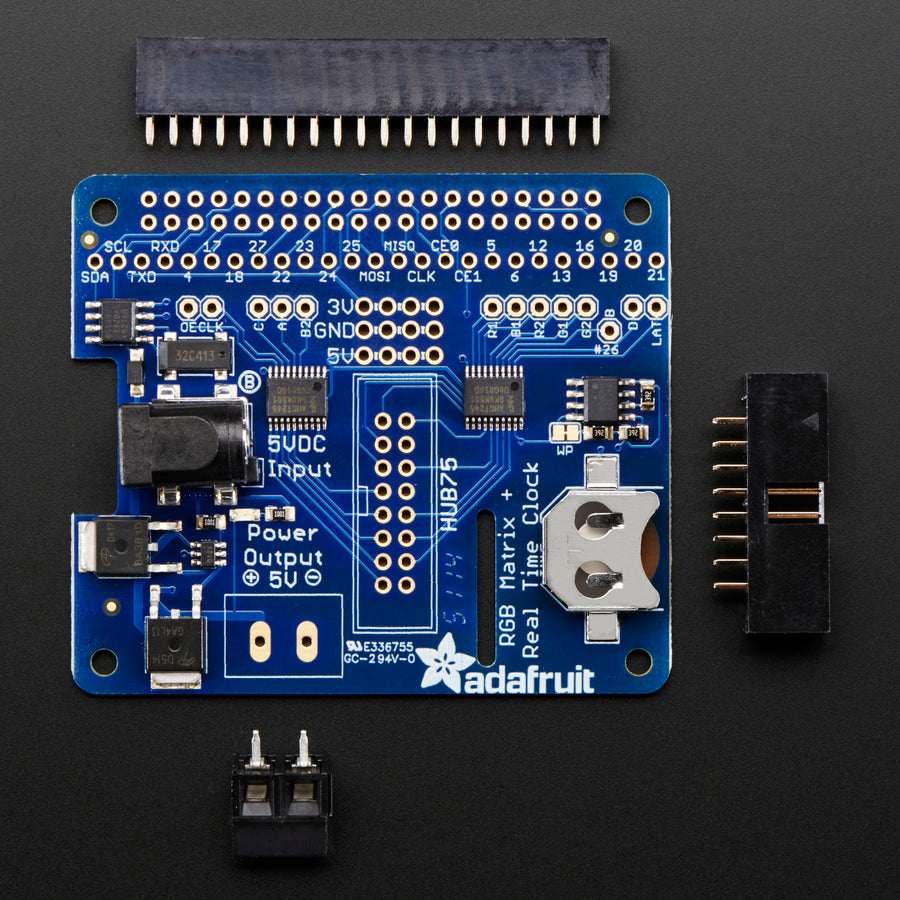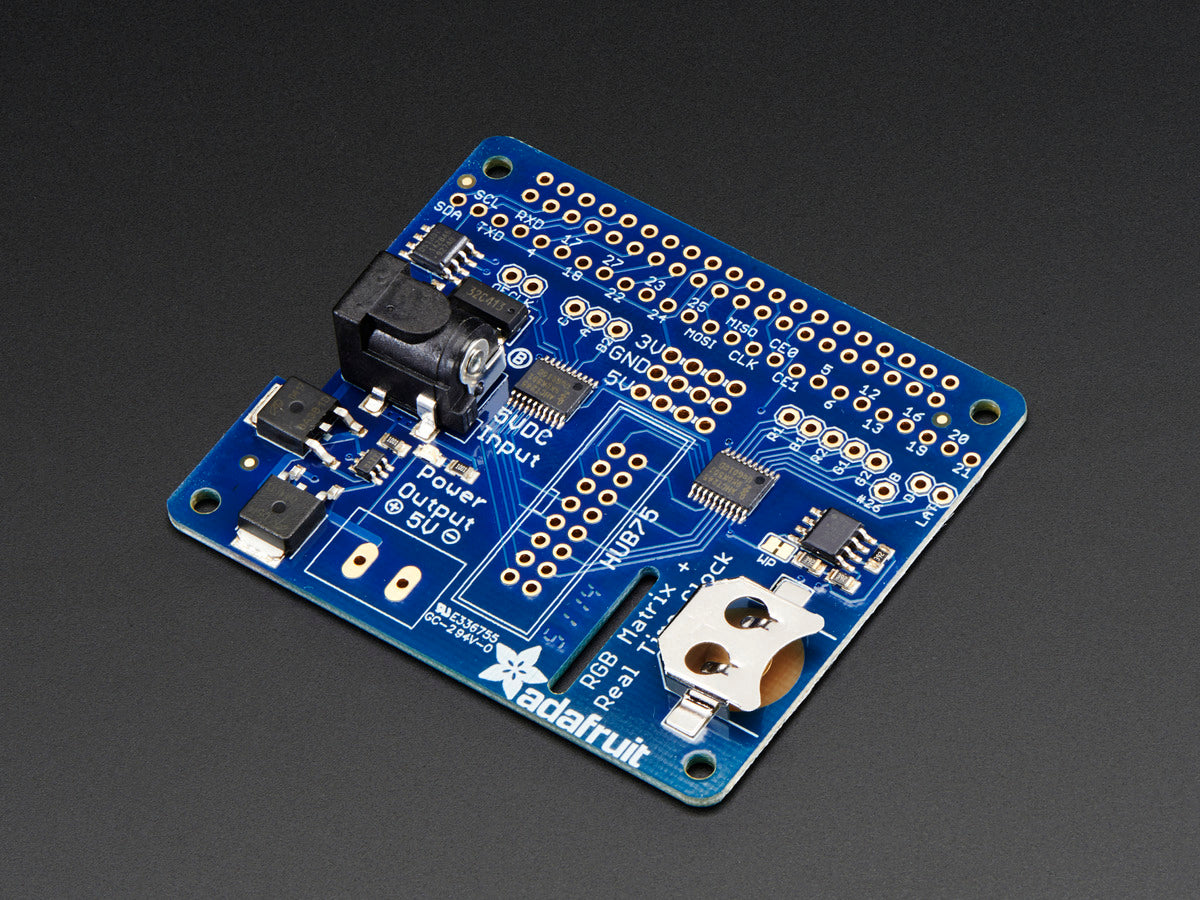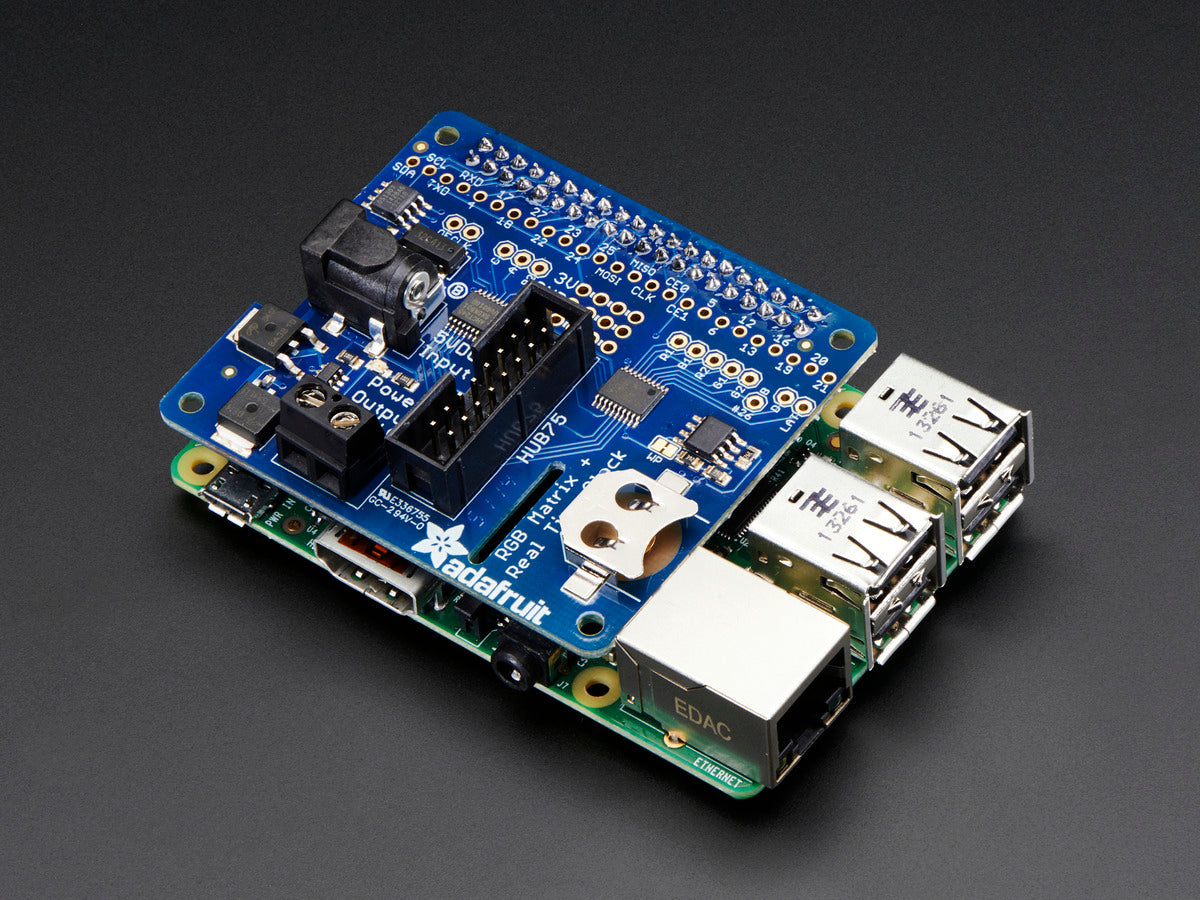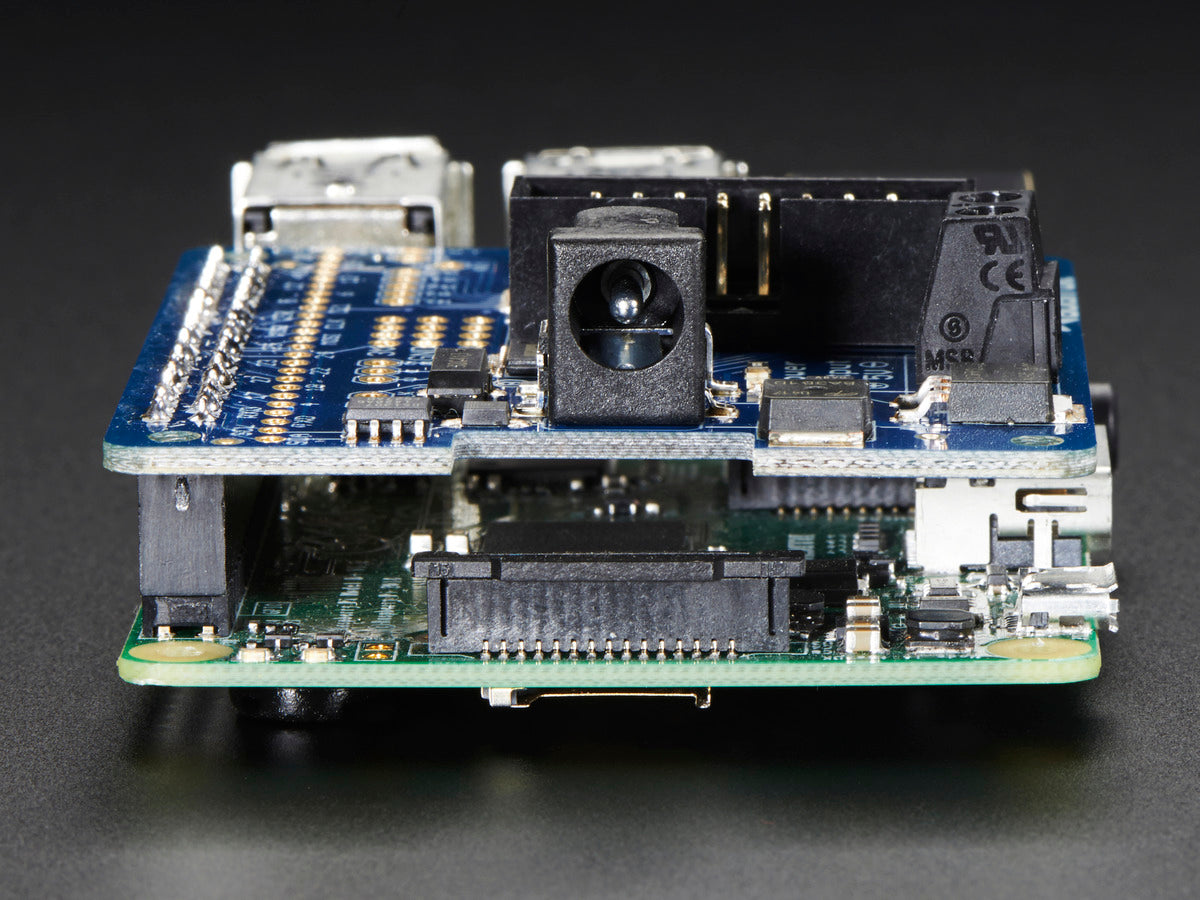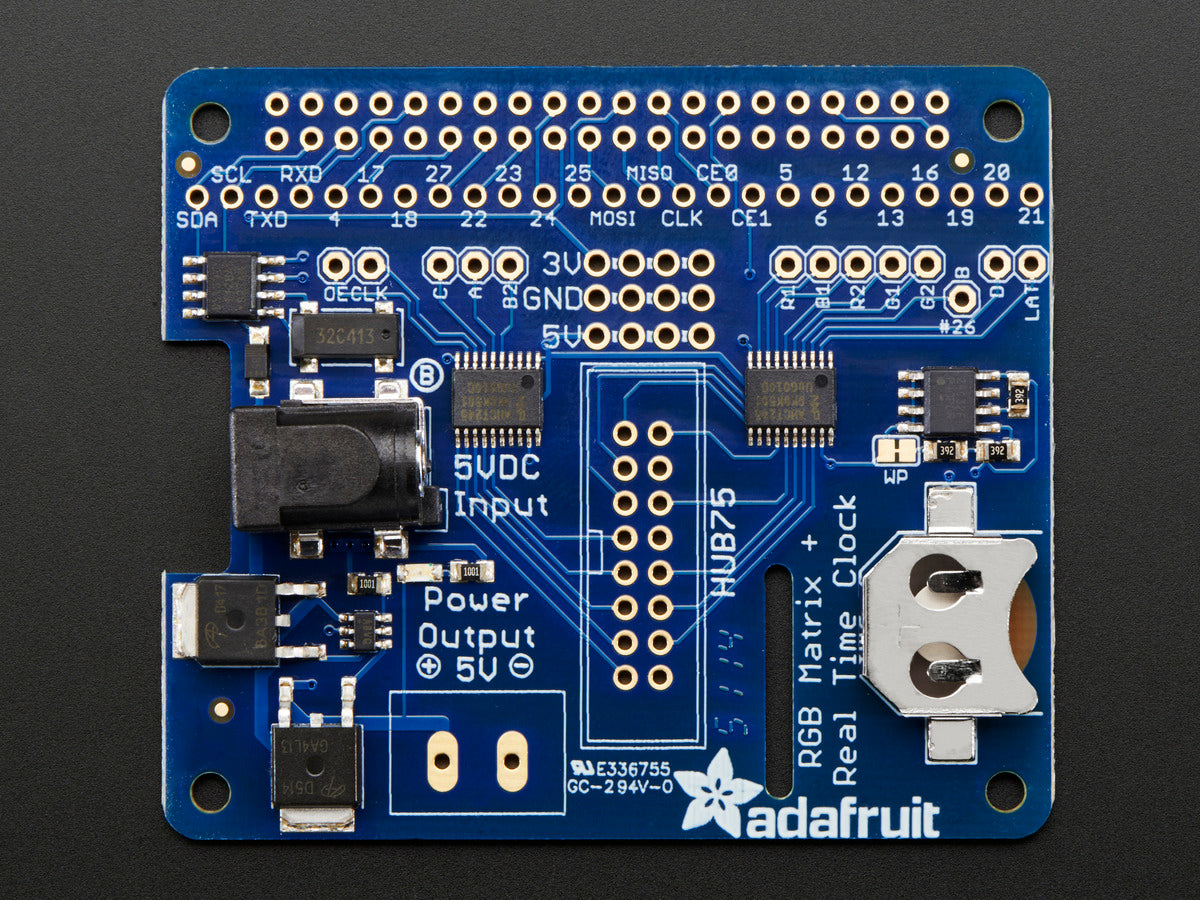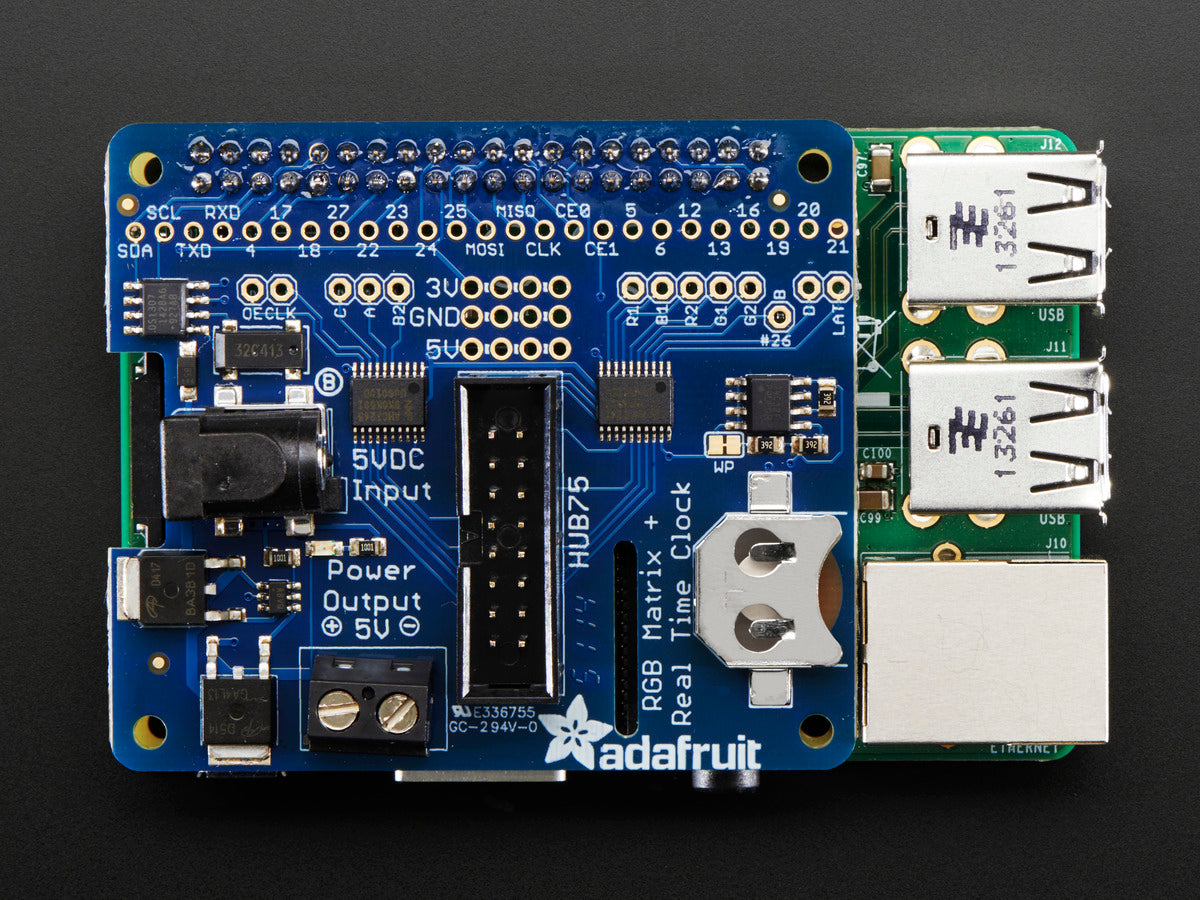Adafruit
Adafruit RGB Matrix HAT + RTC for Raspberry Pi, Mini Kit
Adafruit RGB Matrix HAT + RTC for Raspberry Pi, Mini Kit
Couldn't load pickup availability
You can now create a dazzling display with your Raspberry Pi Model A+/B+/Pi 2 or Pi 3 with the Adafruit RGB Matrix HAT. This HAT plugs into your Pi and makes it super easy to control RGB matrices such as those we stock in the shop and create a colorful scrolling display or mini LED wall with ease.
This HAT is our finest to date, full of some really great circuitry. Let me break it down for you:
- Simple design - plug in power, plug in IDC cable, run our Python code!
- Power protection circuitry - you can plug a 5V 4A wall adapter into the HAT and it will automatically protect against negative, over or under-voltages! Yay for no accidental destruction of your setup.
- Onboard level shifters to convert the RasPi's 3.3V to 5.0V logic for clean and glitch free matrix driving
- DS1307 Real Time Clock can keep track of time for the Pi even when it is rebooted or powered down, to make for really nice time displays
Works with any of our 16x32, 32x32 or 32x64 RGB LED Matrices with HUB75 connections. You can even chain multiple matrices together for a longer display, you can chain as many as you like but the bigger the display the harder it is on the Pi so keep that in mind! We don't recommend more than 32x128 pixel setups
Please note: this HAT is only for use with HUB75 type RGB Matrices. Not for use with NeoPixel, DotStar, or other 'addressable' LEDs.
Each order comes with a HAT PCB with all surface mount parts assembled, a 2x20 female socket connector, a 2 pin terminal block, and a 2x8 IDC socket connector.
A CR1220 coin cell, Raspberry Pi and RGB Matrix is not included.
A 5V power supply is also required, not included, for powering the matrix itself. The Pi cannot do it due to the high currents. To calculate the max current of your matrix set up, multiply the width of all the chained matrix by 0.12 : A 32 pixel wide matrix needs 32*0.12 = 3.85A so pick up a 5V 4A power supply.
Some light soldering is required to attach the headers to your Pi. A soldering iron and solder are required, but it's not a complex soldering job and most beginners can do it in about 15 minutes.
Downloads
